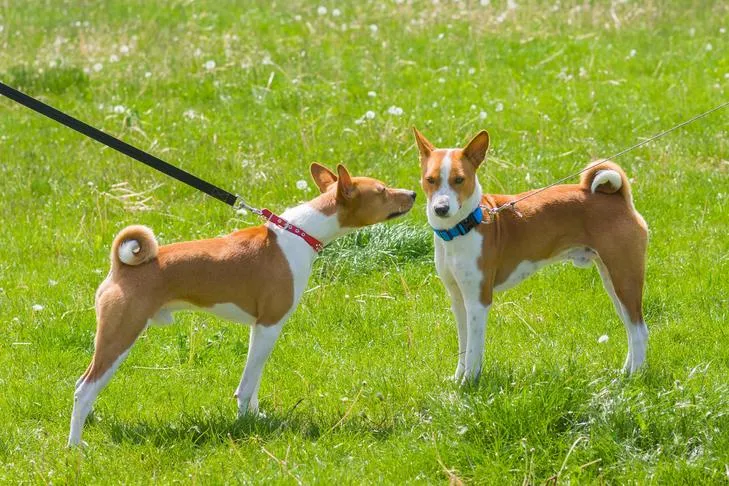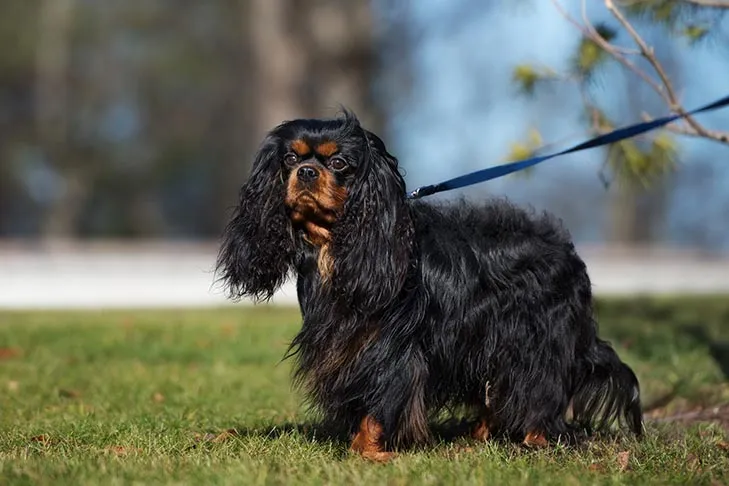Walking your puppy should be an enjoyable experience, a chance for both of you to explore the world and bond. However, a common challenge many puppy owners face is a determined little pup dragging them down the street. Not only is a pulling puppy frustrating, but it can also be unsafe, potentially leading to injuries for you or your dog, and even cause your puppy to get into trouble or run away if they manage to slip free. If you’re wondering how to stop a puppy pulling on the lead, rest assured you’re not alone, and with consistent training and the right approach, you can transform chaotic walks into pleasant strolls.
The good news is that teaching your puppy to walk politely on a leash is an achievable goal. It requires patience, consistency, and an understanding of why puppies pull in the first place. Often, it’s simply their excitement to explore, meet other dogs, or get to a particular sniff spot. By implementing some simple yet effective training techniques and adjusting your own behavior during walks, you’ll soon be walking with your puppy, rather than being pulled by them. For those moments when you feel like managing an unruly puppy is an uphill battle, remember that every step of progress counts.
1. Always Reward Good Leash Behavior
Never underestimate the power of positive reinforcement. Puppies, like all dogs, are more likely to repeat behaviors that are rewarded. This principle is crucial when teaching your puppy to stop pulling on the lead. If your puppy is walking calmly by your side with a loose leash, acknowledge and reward that behavior immediately. Rewards can be anything your puppy values: a small, high-value treat, enthusiastic verbal praise, or a gentle pet.
In the initial stages of training, be generous with your rewards. You want your puppy to clearly understand that walking politely by your side leads to good things. As your puppy’s loose-leash walking skills improve, you can gradually reduce the frequency of treats, substituting them with “life rewards” like the chance to sniff an interesting patch of grass or greet a friendly passerby. The key is to make polite walking far more rewarding than pulling.
2. Never Let Your Puppy Walk When They Are Pulling
This is perhaps one of the most fundamental rules of teaching a puppy not to pull on the lead. Your puppy pulls because they want to get somewhere – to sniff that tree, meet that dog, or simply go faster. If you allow them to continue moving forward while they are pulling, you are inadvertently rewarding the very behavior you want to stop. This teaches your puppy that pulling works to get them what they want.
The moment your puppy starts to pull, stop dead in your tracks. Plant your feet firmly and become a tree. Do not move forward until the tension on the leash slackens. Your puppy will eventually turn back to see why you’ve stopped, or at least ease the pressure on the lead. This immediate consequence (the walk stopping) is a powerful lesson for your puppy: pulling makes the fun stop.
3. Wait for a Loose Leash Before You Walk
So, you’ve stopped when your puppy pulls. How do you know when it’s okay to resume walking? Wait for the leash to go slack, forming a “J” shape. More importantly, wait for your puppy to re-engage with you. This might involve them looking back at you, sitting, or even just pausing and releasing the tension. When this happens, offer praise and a treat right at your side, then immediately resume walking.
 Basenjis meeting in a field outdoors, one on leash.
Basenjis meeting in a field outdoors, one on leash.
Initially, you might find yourself stopping and starting every few steps. This can feel tedious, but it’s crucial for your puppy to make the connection: loose leash equals forward movement, tight leash equals stop. With consistent repetition, your puppy will quickly learn that a relaxed leash is the key to continuing their walk. If you are also experiencing issues with your puppy grabbing the leash, understanding preventing leash biting can complement this training.
4. Incorporate Life Rewards on Your Walk
Walks are more than just bathroom breaks for your puppy; they are vital opportunities for physical exercise and mental stimulation. You can supercharge your loose-leash training by using “life rewards” – the things your puppy naturally enjoys during a walk – as incentives for good behavior. These might include the chance to investigate an interesting smell, greet a friendly person, or play briefly.
For instance, if your puppy walks a short distance (e.g., 10 feet) without pulling, release them with a cheerful “Go sniff!” to explore a bush for a minute or two. This reinforces the idea that polite walking earns them access to the exciting parts of their walk. Such bonus rewards are incredibly motivating and demonstrate to your puppy that good manners truly pay off.
5. Walk at a Good Pace
Often, puppies pull because their human companions are walking too slowly for their energy levels. Even small breeds can move surprisingly quickly! Part of teaching your puppy not to pull on the lead involves finding a walking pace that is comfortable and engaging for both of you. While you can train your puppy to match your exact speed, a slightly quicker pace during initial training can actually make it easier for them to stay by your side without feeling the need to surge ahead. A brisk pace can help channel their excitement and energy in a more controlled manner.
6. Be Consistent With Your No-Pulling Rule
Consistency is paramount in all puppy training, especially when addressing leash pulling. It can be incredibly tempting to let your puppy pull just for a moment when you’re in a hurry, it’s cold, or you’re just trying to get them to their potty spot quickly. However, every single time you allow your puppy to pull and move forward, you are reinforcing that pulling sometimes works, setting your training back significantly.
Establish a firm no-pulling rule and stick to it, regardless of the circumstances. Until your puppy reliably walks on a loose leash for extended periods, consider taking them to a secure yard for quick potty breaks or saving longer walks for when you have ample time to commit to training. This unwavering consistency will help your puppy learn the rules much faster. Addressing other challenges like addressing puppy biting also requires this same level of consistency.
 Beagle pulling on the leash to sniff while on a walk outdoors.
Beagle pulling on the leash to sniff while on a walk outdoors.
7. Keep Training Sessions Short and Fun
Training a persistent leash puller can be frustrating, and in the early stages, you might not even make it to the end of your driveway without multiple stops. To prevent both you and your puppy from becoming discouraged, keep training sessions short, positive, and upbeat. Puppies have short attention spans, and asking for too much too soon will only lead to burnout and negative associations with training.
Focus on small, achievable goals. Your objective isn’t to cover a certain distance initially, but rather to achieve loose-leash walking, even if it’s just for a few steps or to the nearest lamppost. End each session on a positive note with praise and rewards. This keeps your puppy enthusiastic about training and eager for the next session.
8. Be Interesting and Engaging on Walks
For a puppy, the world is a sensory overload of exciting sights, sounds, and an irresistible array of smells. These distractions can easily pull their attention away from you and encourage them to pull on the leash. If you’re disengaged, perhaps on your phone or simply passively walking, your puppy has little incentive to pay attention to you.
Instead, strive to be the most interesting thing on the walk. Talk to your puppy, offer sudden changes in direction, play quick games like “find it” with a treat, or simply pause for some focused attention. By being unpredictable and engaging, you teach your puppy to keep an eye on you, wondering what exciting thing you’ll do next. This makes them much more likely to follow your lead rather than trying to forge their own path.
9. Stay Calm
Walks can present various emotional triggers, from encountering a friendly neighbor to the unexpected approach of a barking dog. Your emotional state profoundly impacts your puppy. Dogs are incredibly adept at reading human emotions, and your anxiety or frustration can easily travel down the leash, escalating your puppy’s excitement or intensifying their fear. This is crucial for their overall behavior, even for understanding dog dominance with other dogs.
 Cavalier King Charles Spaniel on a lead outdoors.
Cavalier King Charles Spaniel on a lead outdoors.
To help your puppy remain calm and responsive, you must stay calm yourself. Projecting a serene demeanor demonstrates to your puppy that there’s nothing to be overly excited or fearful about. A relaxed puppy is far more likely to listen to your cues and maintain appropriate leash manners. Practice deep breaths and maintain a loose grip on the leash to avoid transmitting tension.
10. Engage Your Puppy In Distracting Situations
Distractions are inevitable on walks. Whether it’s another dog, a squirrel, or a new person, these can easily cause your puppy to forget their leash manners and start pulling. Some puppies might pull to investigate, while others might pull to retreat if they’re feeling nervous around strangers.
The key to managing distractions is to proactively engage your puppy before they become overwhelmed. If you spot a distraction approaching, gently call your puppy’s name, offer a treat, or ask for a simple, familiar command like “sit” or “watch me.” These exercises redirect their focus onto you, keeping them mentally engaged and less likely to react impulsively to the distraction. The goal is to grab their attention before the distraction becomes too compelling, helping them to calmly observe or ignore it rather than pulling towards or away from it.
By consistently applying these techniques, you’ll be well on your way to stopping a puppy pulling on the lead and enjoying harmonious walks together. Remember that patience and positive reinforcement are your best tools in building a strong, trusting relationship with your well-behaved puppy.
